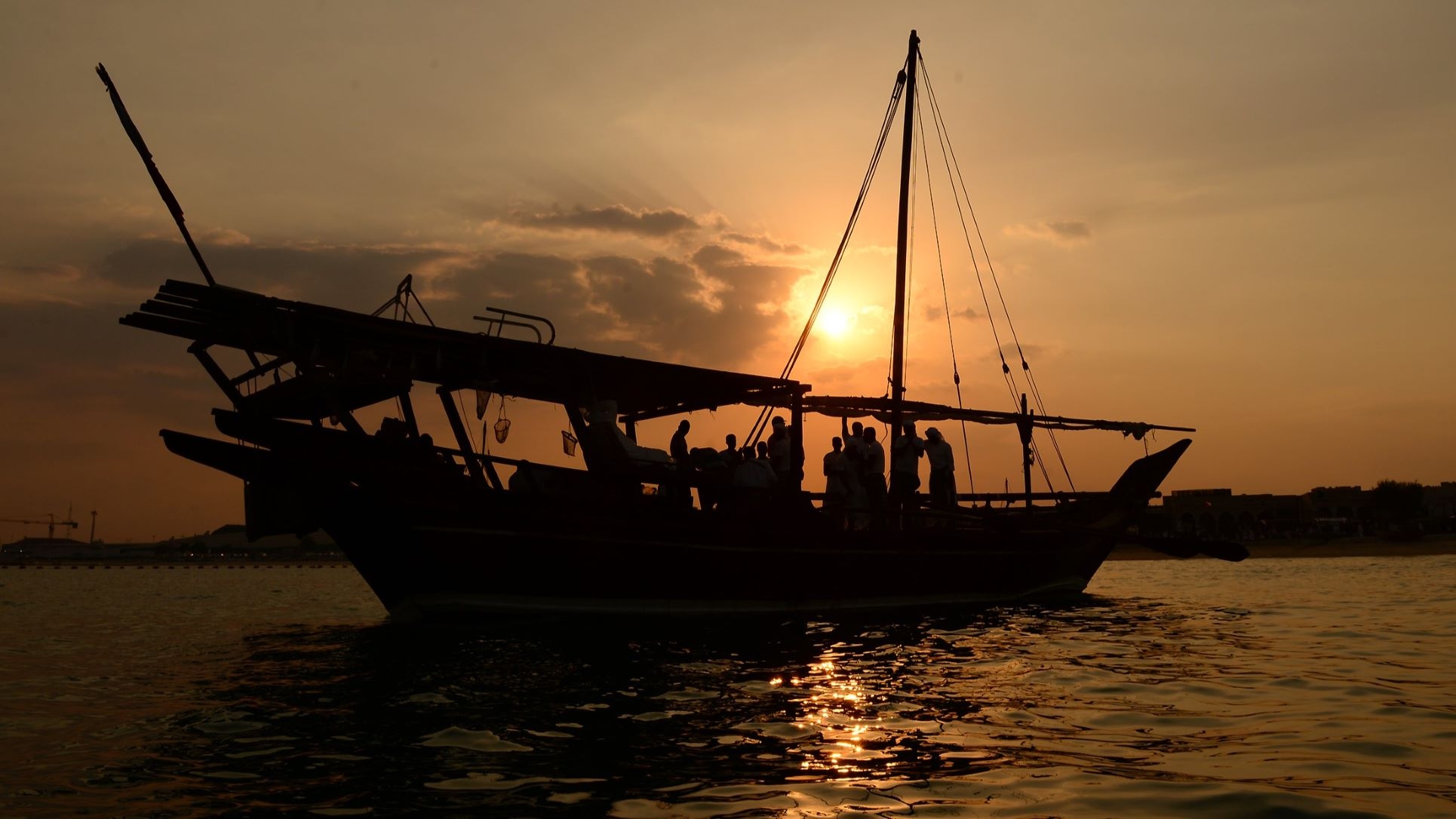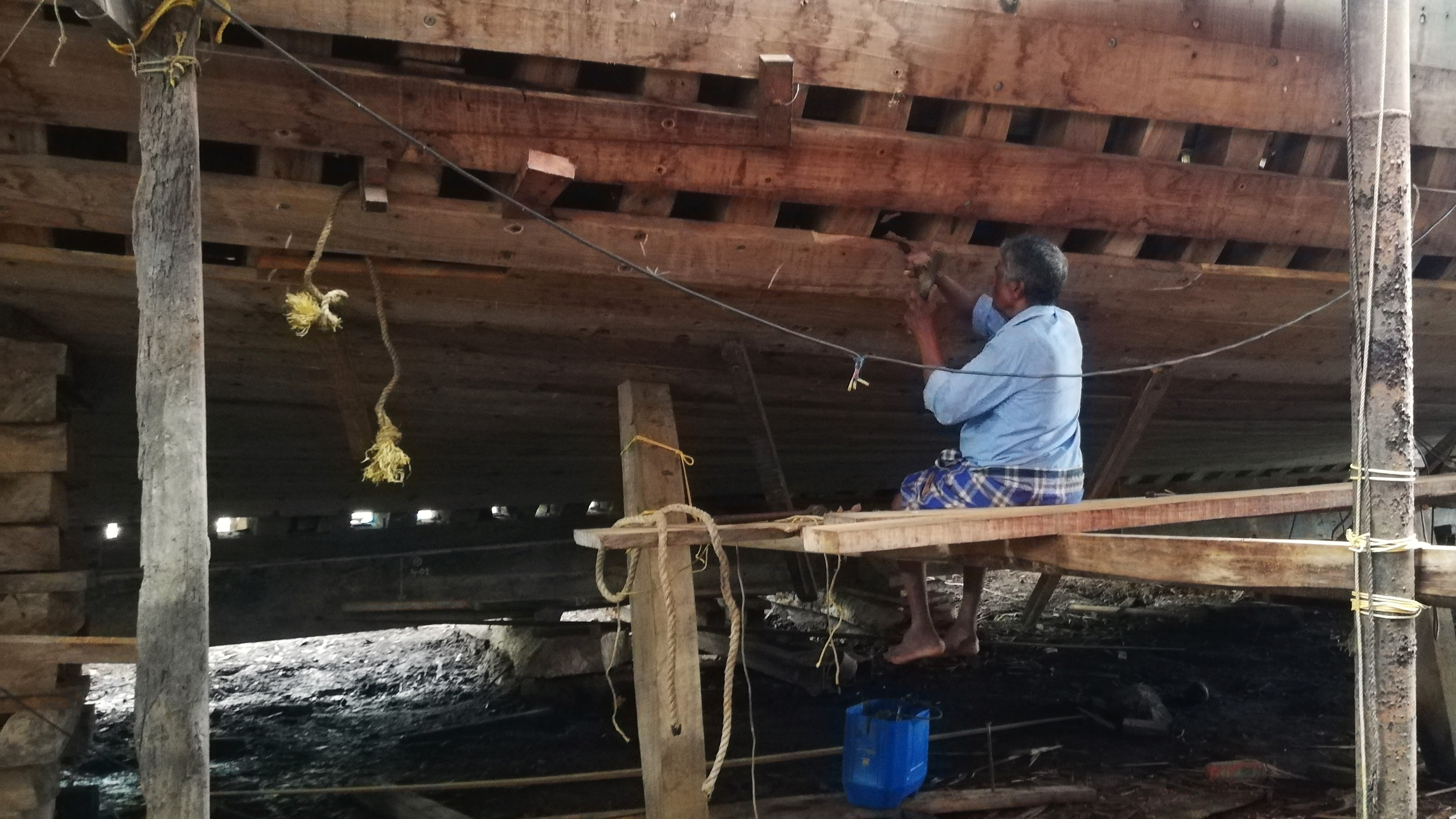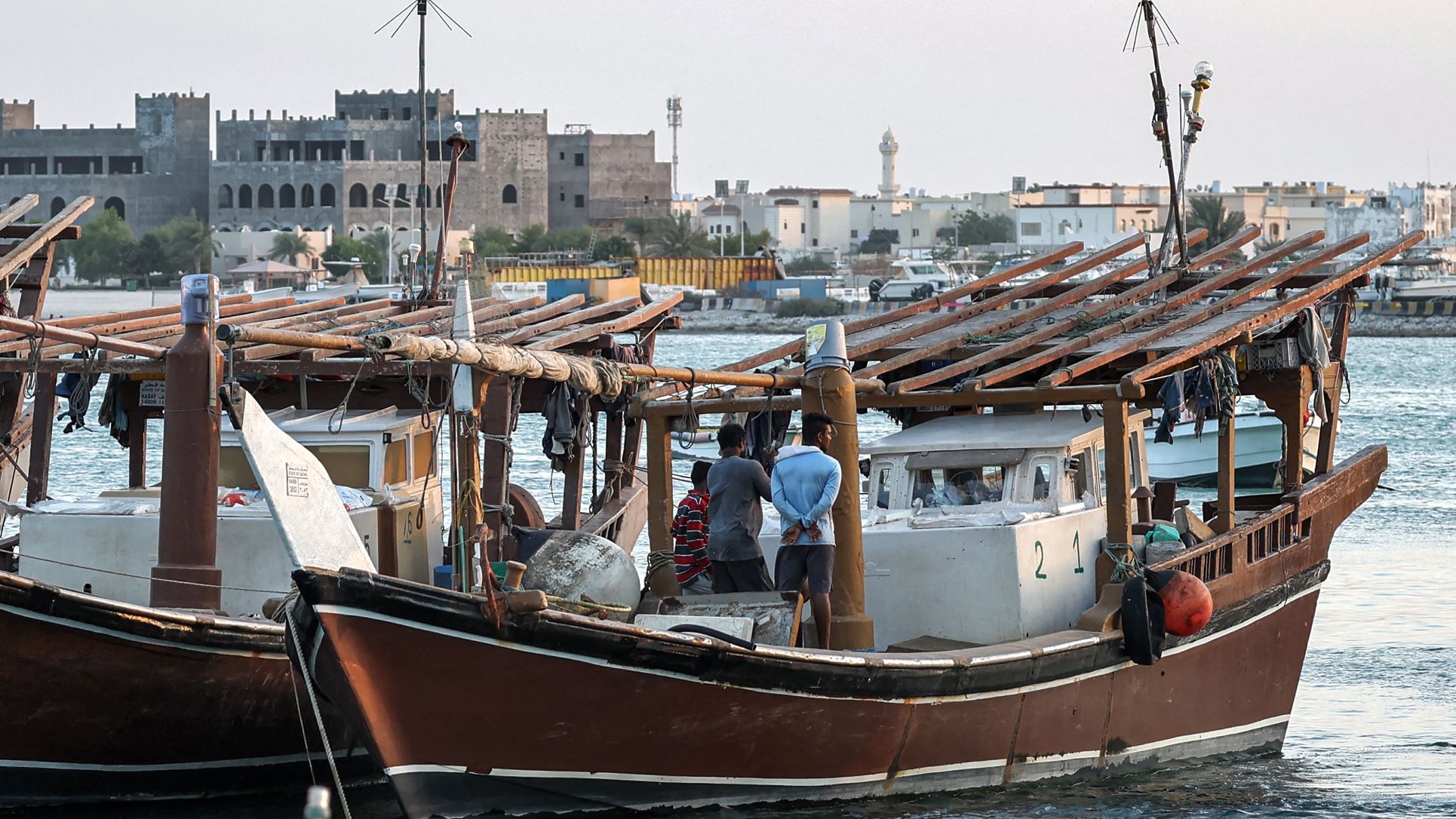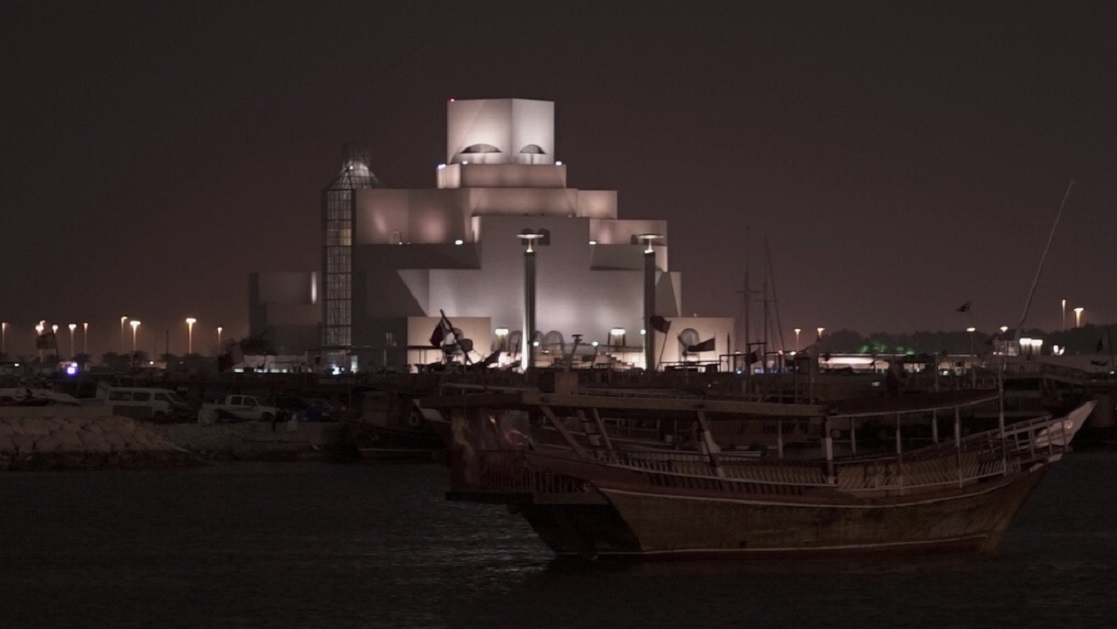Inside the Indian town that produces the Khaleeji dhow

Edathodi Sathyan returns to his workshop frustrated after a visit to his local electricity suppliers.
The head carpenter’s work has been interrupted by power outages and whether he progresses with the tasks at hand or not, he must pay his dozen workers for the day’s labour.
At his leased boatyard on the banks of the Chaliyar river, two dhows measuring between 40 and 45 metres long and costing close to $370,000 each have been sitting close to being ready for delivery to their Qatari buyer for the last four years.
Devastating floods in the Indian state of Kerala and the Covid-19 pandemic have slowed work, but the upcoming football World Cup in Qatar has brought with it a renewed sense of urgency to finish the job.
At 57, Sathyan has been making dhows since 1983, well after what he calls the industry’s “golden period”.
New MEE newsletter: Jerusalem Dispatch
Sign up to get the latest insights and analysis on Israel-Palestine, alongside Turkey Unpacked and other MEE newsletters
As a child, he watched long lines of dhows lined up along Beypore’s waterways, ready for their new Gulf Arab owners.
“A dhow fitted with a normal engine can reach its destination in the Gulf in around 220 hours,” he tells Middle East Eye, adding: “Some dhows get there in a week when they’re fitted with engines with more horsepower.”
A long history of boat making
Located on India’s southwestern Malabar coast, Beypore has long been a regional centre for trade and boat making and has a pedigree stretching back at least 2,000 years.
“Beypore shipyards were well-known as they were located at a crossroads between the western Indian Ocean and the Far East,” writes the maritime historian Dionisius A Agius in his work Classic Ships of Islam: From Mesopotamia to the Indian Ocean.
The University of Exeter academic explains that the coastal area's importance grew because it had local access to different types of timber and an abundance of skilled shipbuilders.
“The southwest Indian coast was the right spot for ships to stop over because of the monsoonal winds and/or to repair," he adds.
For traders from East Asia and the Middle East, Malabar historically provided a perfect meeting point between the eastern and western worlds.
This position has allowed the region to soak up diverse cultural influences over the centuries.
Arab soldiers and merchants were certainly settling in Malabar from the early Islamic period onwards, but the history of cultural interactions in the area most likely goes back even further.
In his book, Indian Christians of St Thomas, the 19th-century author WJ Richards, mentions “gold coins” found in the region, which date back to the Roman age and bear the “image and superscription of more than one Caesar”.
'We used to make dhows without order because we were so sure of patrons'
- PO Hashim, dhow contractor, Malabar
Dhow-making arrived more recently with Yemeni migrants from the Hadhramaut region in the late 19th century and the early 20th century.
According to 61-year-old Jahfar Barami’s family lore, his great great grandfather came to India from Yemen and married into an aristocratic Hindu family in southern Malabar, bringing with him the craft of dhow making.
“Baramis took the initiative in the dhow-making industry seen in Beypore,” he tells MEE.
Jahfar’s great uncle Ali Barami was a spice trader and contractor for the production of dhows and growing up, the younger Barami has fond memories of feasts held by his family for visiting Arab patrons.
He also remembers travelling with his elders to the town of Nilambur in the Keralan interior to source wood for the boats.
Known for its greenery just as much as its waters, Kerala is one of the most forested regions of the Indian mainland with more than half of the state covered in trees.
Skill involved
Dhows take shape in the minds of a master craftsman known as a "maistry", an English-derived word commonly used in South Asian dialects.
“Without a blueprint but with rough calculations, the maistries have the whole project in their minds and assign tasks to people working under them,” explains PO Hashim, a 68-year-old dhow contractor with more than 45 years of experience in the industry.
Hashim works for dhow makers M/s Haji PI Ahamed Koya, a firm that was established in 1885.
The industry's chief maistry is 55-year-old Edathumpadikkal Gokuldas, the son of Chandukkutty Gokuldas, one of the most legendary maistries in the industry.
“We make the keel first using crooks (bent wood)... they are the backbone of a dhow,” Hashim says.
Craftsmanship is a crucial aspect of ensuring the eventual seaworthiness of the boat.
“It’s not ordinary woodwork,” says the carpenter Sathyan, continuing: “If the cut wood’s shape has minor variations, it can’t be corrected."
Intricate calculations ensure that the dhow remains level and upright in the water and a boat will remain on scaffolds until work is complete with the final product typically weighing around 300 tonnes.
When a dhow is finished, local dockyard workers, known as Mappila khalasis, roll the boat out on pulleys and log ramps into the water, at which point an engine is added.
Interiors are usually added upon delivery to customers in the Gulf, as adding them before launch can lead to damage before the boat gets to water.
An uncertain future
But despite its impressive heritage, Beypore’s dhow building industry is in decline due to a confluence of factors.
In the 1960s, government officials acquired a large tract of land for use as a port and shipyard and consequently shrunk the river-front area available for dhow-builders to build their boats.
But competition, government trade policy, and labour disputes have also all played a part in the decline of the industry.
In the 1980s, labourers went on strike over profiteering by intermediaries, while the Indian government placed bans on timber exports, which affected the availability of the wood needed to maintain or repair the boats when they were in the Gulf.
In response to the strikes in the 1980s, dhow contractors from the Gulf and other Indian cities drew workers away with the promise of higher wages.
According to Payyeri Peethambaran, a former photojournalist from the area, in the late 1980s, a carpenter earning 40 Indian rupees a day could move to the Gulf and earn 150 rupees.
There was also a change in the way their traditional customer base in the Gulf operated, as buyers opted for more modern crafts.
“We used to make dhows without order because we were so sure of patrons,” says PO Hashim.
However, the traditional Arab reverence for the dhow has not disappeared completely - particularly among some high-profile individuals.
Since 2005, Hashim has built 10 luxury dhows, including he says for Qatar’s Sheikh Tamim bin Hamad Al Thani, who has visited his pavilion at Qatar’s annual dhow festival.
“It has a prestige value," he says of the place dhows have in Gulf culture, drawing attention to the fact that clients now come from outside the Gulf as well, citing a recent French customer who has Moroccan origins.
But despite this continued interest in the craft, Hashim admits the long terms prospects still do not look good.
With rising levels of education in the region, there are higher expectations of what constitutes a fulfilling career and low wages put many - including the children of dhow makers - off entering the industry.
“They got educated. Despite low wages in other professions, they don’t want to make dhows,” he says, further explaining that even among his siblings, he is the only one in the industry.
Hashim's company now runs a private museum called Dhow Museum that preserves photographs of Arabs visiting Beypore and other relics of the industry’s heyday.
While the craft of dhow-making still trudges along in Malabar - for now - there may well come a day in the near future when all that remains of the dhow-making industry are those memories.
Middle East Eye delivers independent and unrivalled coverage and analysis of the Middle East, North Africa and beyond. To learn more about republishing this content and the associated fees, please fill out this form. More about MEE can be found here.








